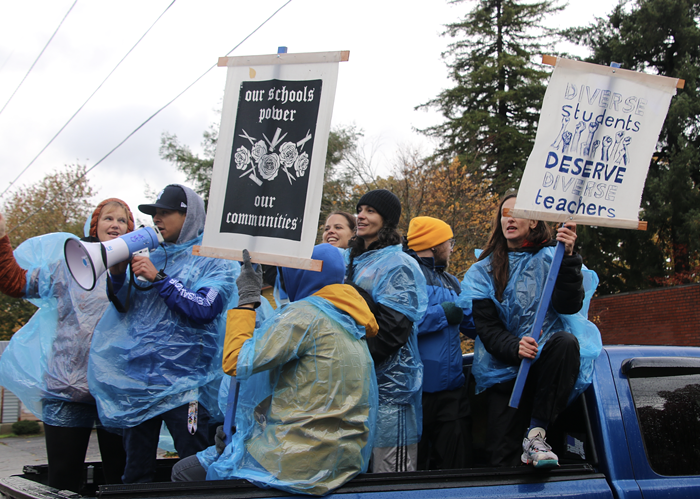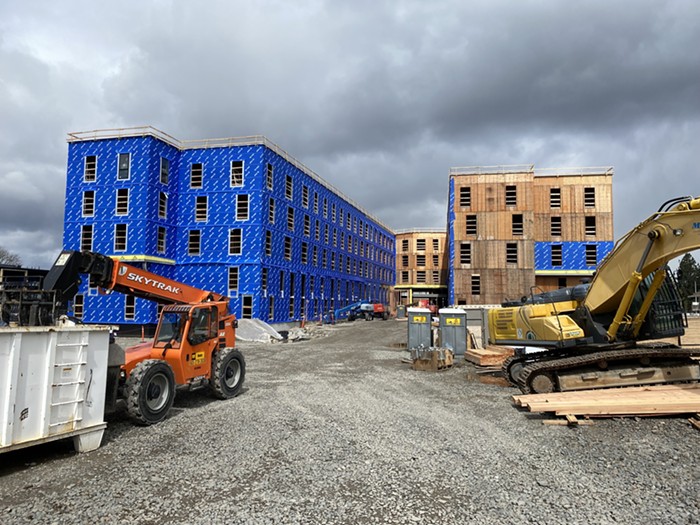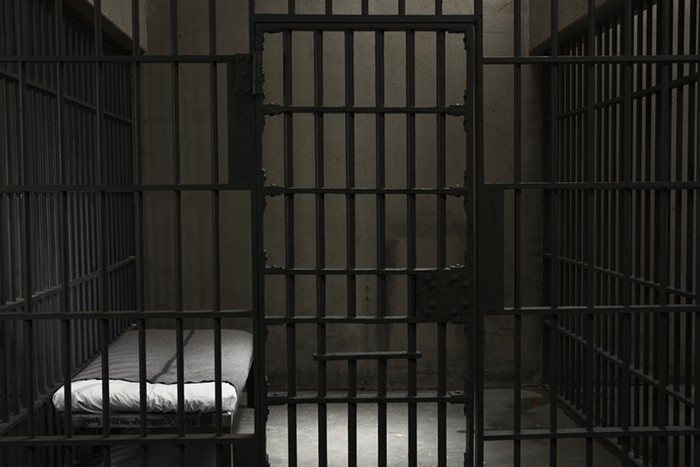MAYOR SAM ADAMS wants to parcel out enough from the city's, um, flush general fund to build just two more Portland Loos over the next year—short of the four that Commissioner Randy Leonard, the city council's Loo champion, had sought.
But in his office last week, when asked whether the mayor had put a pinch in his plans to plop down more of the patented public toilets, Leonard was hardly upset. The commissioner, it seems, has other plans.
First up: Persuading the parks bureau to look at whether new parks should come with Loos, instead of traditional brick-and-mortar restrooms that can cost two to three times as much—restrooms that sometimes, because of that high price tag, never get built at all.
"I don't think a park should be built without a restroom," Leonard says.
He's already got one test case in mind. Officials are close to a deal that would swap out a $250,000 bathroom at a new Pearl District park, the Fields, with at least one $75,000 Loo. The Portland Development Commission, the park's financier, is looking to cut costs.
If it gets the okay, the Fields Loo would be Portland's fifth. The city opened its first in 2008 on NW 5th and Glisan, and then unveiled three more last year, at SW Taylor and Naito, at SW Ash and Naito, and in Jamison Square. The Loos, open 24 hours, are designed with open bottoms so that cops can easily see who's inside, and for how long.
Parks officials say they haven't decided yet on the Fields Loo. Nor are they convinced, yet, that systematically adding Loos to parks makes sense. Mike Abbate, the bureau's asset manager, said there are "tradeoffs." Loos are cheaper, but don't provide storage. They have only one toilet. And while Loos are required to stay open all night, parks close early.
"But if you do these, and they turn out to be successful," says Abbate, "and there's a less expensive way to add restrooms, then you look at them."
Meanwhile, officials are working with neighborhood groups to plot the best spots for the two Loos the mayor has paid for.
All signs point to the Park Blocks, possibly near two public bathrooms, on SW Ankeny and West Burnside, that Adams shuttered as part of a drug crackdown. There's also interest in filling in spots on SW Main or Madison.
Anne Hill, helping to coordinate Loo issues for the water bureau, says planners in several bureaus prefer to study logistics at several intersections—sewer lines, foot traffic, visibility, curb size, demand—before taking shorter lists to neighbors.
Hill also said three cities have gotten serious about importing the Loos, with La Mesa, California, and Victoria, BC joining San Diego in considering a purchase. Money from such sales would create a self-sustaining Loo fund.
One last Loo could come with some criticism. Fire bond money paying for a new Station 21, near the Hawthorne Bridge, will also be tapped for a new riverfront Loo.
That could lead some taxpayers to question, just as they've done with sewer and water projects, whether the cash was well spent.
"We'll just come up with it somewhere else if it becomes a problem," Leonard says. "It's not enough money to fight about."



















